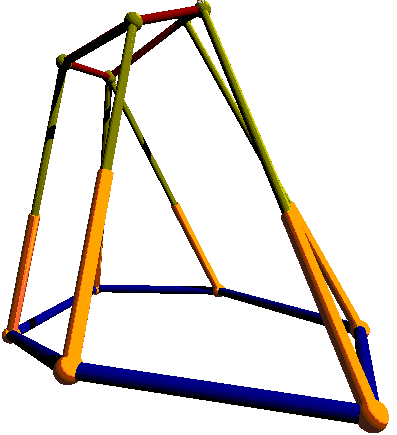
In our case, we consider that two points of attachment of the moving
platform are identical, for instance Y1=Y6..
Here is an example of such a robot :


As Y1=Y6, Z1=R.Y1+T is on a circle, so the translation can
be written with only one variable, say t for instance. This gives
a system of 4 equations which are 4 quadratic forms in (a,b,c,d)
.
Then, a system composed by 4 equations, second up fourth, is solved. For this, we construct a resultant matrix for the variables (a,b,c,d) by a generalization of Dixon's method. Its entries are polynomials in one variable t, its determinant is, up to a scalar, the resultant of these 4 quadratic forms. By computing the eigenvalues and eigenvectors of this matrix we can find the values for t and q=(a,b,c,d) in the roots of the system. We know ( you can see...this) we can find at least 40 different solutions.
To know more about all this, see here and here
For an example of such a resolution, you can see one specialization and the moving result .